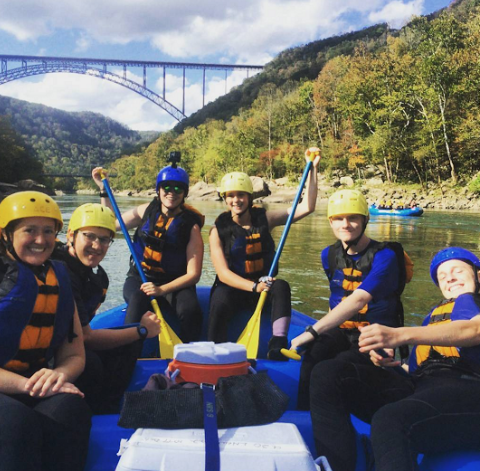Outdoor adventure therapy uses the natural environment as a therapeutic or educational tool.The outdoor environment allows for a lack of distractions, letting participants focus on particular areas that need growth. This separation from the rest of the world allows them to escape their normal lives and turn their focus internally. Living in “pristine nature,” the value of which has been under fire recently, gives those involved a strong emotional connection to the wilderness that surrounds them and boosts a concept of personal significance. The outdoor environment also encourages physical activity since many of the programs incorporate both individual and group activities such as backpacking, rock climbing, kayaking, or sailing. Improvements in physical health caused by activities like these typically lead to growth in mental and emotional health that so many need.
Back in the times of bell-bottoms and disco, many adolescents found themselves in juvenile prisons with dire futures. To resolve the ever growing population of at risk youths, many states began funding Wilderness Therapy Camps–also known as boot camps– which were run by inexperienced staff with negligent curriculua. These horrifying tree-lined prisons reached an apex in 1994 when a young boy died of a treatable ulcer during a trip. Since then, Wilderness Therapy Camps have been revolutionized and rebranded into Outdoor Adventure Therapy (OAT) or Outdoor Adventure Education (OAE). The new therapeutic programs emphasize safe and ethical curriculua with a focus on emotional, psychological, and social development.
These mental health benefits have become a point of distinction for these programs, bringing in participants from a variety of backgrounds with a variety of needs. OAT and OAE are designed to accommodate these diverse groups of people including those with drug and alcohol abuse issues, at-risk youths, adolescents with cancer, and victims of bullying. Organizations such as Four Circles and InnerRoads Wilderness Adventure provide participants with help either in the form of counseling or the teaching of coping skills. In addition, educational programs (OAE) work to prevent mental health issues and addiction by establishing a foundation of teamwork and personal growth. Outdoor adventure programs are harnessing the beauty and knowledge of the natural world to allow participants to gain a new perspective and develop resilience. The values that these programs are working to instill are visible in the many success stories that follow these programs.
However, these success stories don’t occur solely based on the programs alone–the success is molded by shared experiences and the solidarity of a community. The relationships created and nurtured through the courses last years beyond the programs themselves. Not only relationships with oneself, but with the other participants as well. These communities, which would have never been found in the boot camps of the 1970’s, are a vital aspect to the success of modern programs. Since the tragedy of 1994, OAT and OAE have refocused on the inter-relatedness of all aspects of life. To create well-rounded individuals, the mind must be connected to the body, the individual must be connected to a community, and the community must be connected to its environment. These bonds can be formed in the natural world when properly guided and encouraged.
Bailee Castillo: Outdoor Adventure Therapy Benefits Adolescents with Cancer |
Anna Gordon: Outdoor Adventure Therapy on Alcohol and Substance Abuse |
Avery Hunt: Adventure Therapy Helping At-Risk Youths |
Kellie Kaufman: Outdoor Adventure Therapy Rebuilding Bully Victims |
Abigail Krump: Why College Students Need Outdoor Adventure |
Outdoor Adventure Additional Resources |
